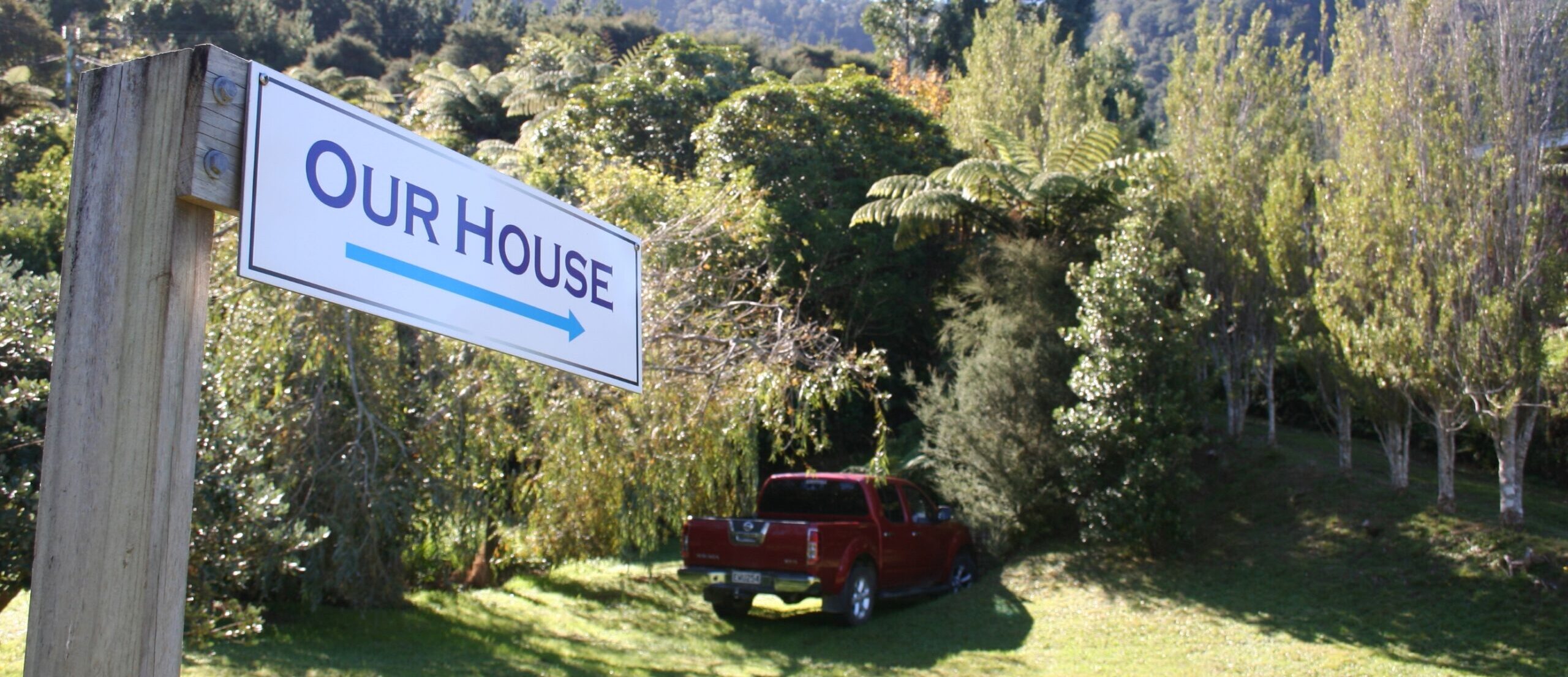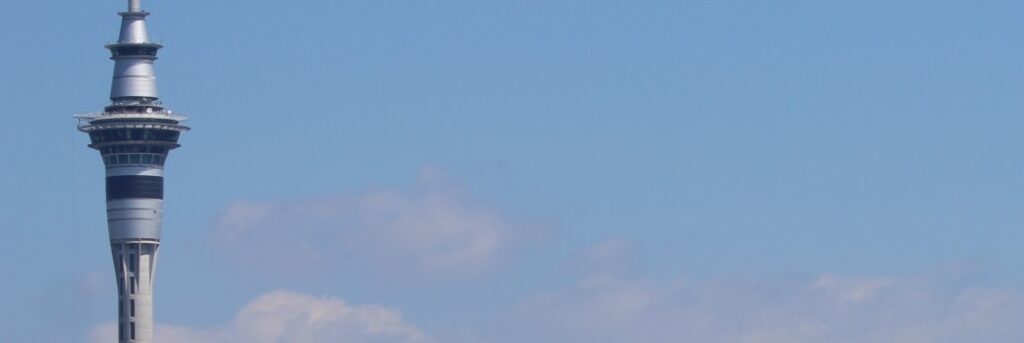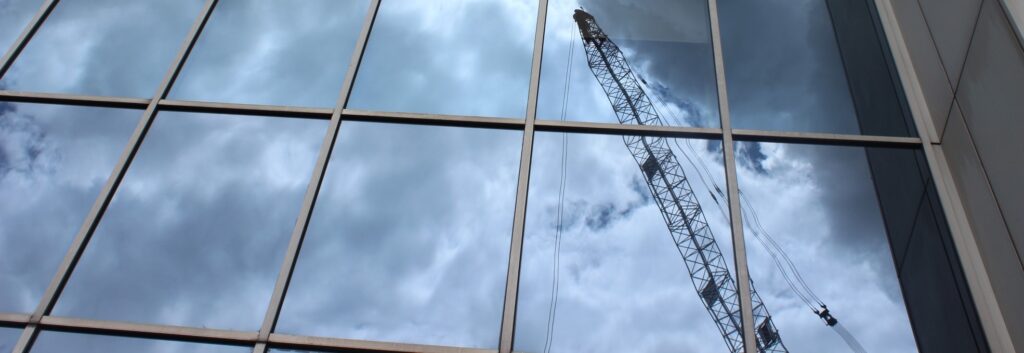NEW ZEALAND WATCH
Real Estate
But median house prices on the West Coast have been going up in the last 12 months.
So much so the Real Estate Institute of New Zealand’s monthly report for June report shows a 35.5% growth in median prices over a year; from NZ$310,000 (A$283,000) in 2024 to NZ$420,000 (A$384,000).
The region led the way in terms of regional price increases; second was the wine growing region of Marlborough (top of the South Island) which recorded a 21% growth over 12 months from NZ$620,000 (A$567,000) to NZ$686,000 (A$628,000).
The national trend was stable as growing numbers of sales were offset by a fall in listing numbers, the REINZ says.
The country’s median house price held steady year-on-year at NZ$770,000 (A$704,000). Outside Auckland, it grew 1.7%, to NZ$691,500 (A$632,000) but in Auckland it fell by 3.4% to NZ$990,000 (A$906,000).
“We’re seeing a market that is steady on the surface but with some movement underneath at a regional level,” REINZ chief executive Lizzy Ryley says.
“The unchanged national median price suggests stability yet this reflects contrasting regional dynamics with some areas experiencing renewed growth year-on-year.”
YEAR-ON-YEAR SALES
- Property sales nationally grew 20.3%, from 4877 in 2024, to 5865.
- Outside Auckland, sales grew 21.4% (3371 to 4091).
- In regional areas, sales in Gisborne increased by 70% (from 20 to 34 sales) followed by Southland (+34.9%), Bay of Plenty (+33.3%) and Marlborough (+32.7%).
Source: https://www.reinz.co.nz
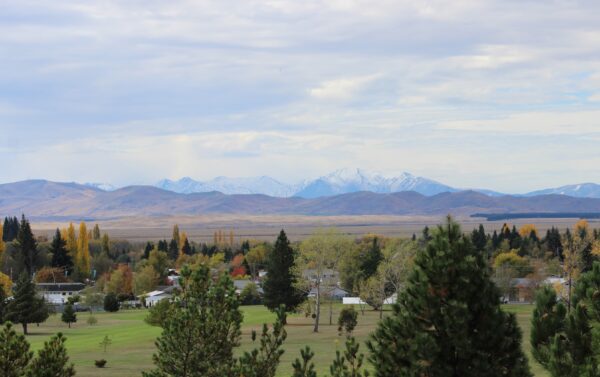
“Nationally, seasonally adjusted sales fell by around 5%, suggesting some caution in the market, but compared to this time last year, sales remain significantly stronger overall.”
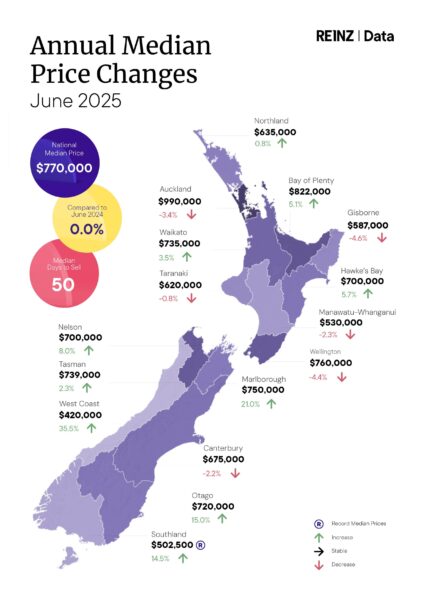 The REINZ says there was a 2.5% decline in new sales listings (7612) over 12 months. Outside Auckland, listings fell by 3.3% to 4700. The level of unsold properties (inventory) nationally rose by 2% to 32,384 properties.
The REINZ says there was a 2.5% decline in new sales listings (7612) over 12 months. Outside Auckland, listings fell by 3.3% to 4700. The level of unsold properties (inventory) nationally rose by 2% to 32,384 properties.
Nationally, there were 676 auction sales reported for June (or 11.5% of all sales), the REINZ says, with 315 of these sales (or 7.7% of all sales) outside Auckland.
The median number of days to sell nationally took an extra three days (to 50 days) and outside Auckland, it took four more days.
“While properties are still selling, the increase in median days to sell indicates that buyers are taking a more considered approach,” Ryley says.
“This shift probably reflects a broader sense of caution; many buyers feel they have the time to explore their options, especially with the amount of choice they have.”
Ryley says most vendors who are entering the market have realistic price expectations and a willingness to adapt to what is offered.
“However, many are receiving offers below their anticipated value, prompting some to delay listing, or relisting, until spring or summer, when market activity may show signs of improvement,” she says.


